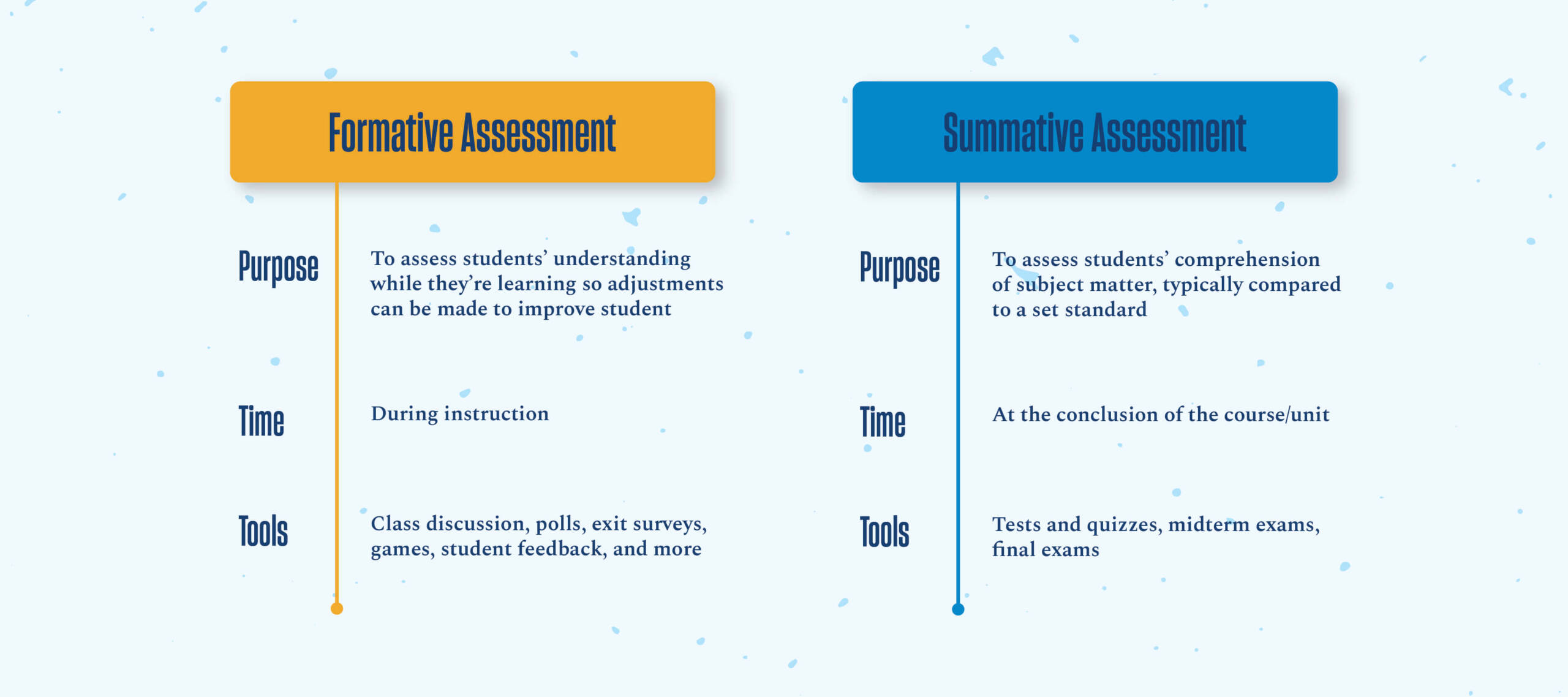

In education, assessments are the roadmap guiding teachers and students to successful outcomes — from navigating subject matter to reaching academic milestones. But not all means of measuring success are the same. In this blog post we’ll explore two of these methods: formative vs. summative assessment.
To maximize teaching effectiveness, it’s important to understand the differences between each assessment type. Keep reading to learn the benefits of tailoring instruction to meet the diverse needs of every learner, plus tips on implementing both techniques.

Formative assessment is not actually a singular method, but instead, a variety of ways for teachers to evaluate student comprehension, learning needs, and academic progress in real-time throughout a lesson, unit, or course.
These assessments aid in identifying areas where students are struggling, skills they find challenging, or learning standards they have not yet achieved. This information enables teachers to make necessary adjustments to lessons and instructional techniques to better meet the needs of their students.
Its primary goal is to measure a student’s understanding during instruction; for example, with quizzes, tests, or exams.
As learning and formative assessment expert Paul Black puts it, “when the cook tastes the soup, that’s formative assessment. When a customer tastes the soup, that’s summative assessment.”
Summative assessment, on the other hand, is any type of evaluation that measures a student’s overall comprehension and achievement at the end of a unit, course, or academic period. It typically takes the form of final exams or projects, and aims to gauge what students have learned. Unlike formative assessment, which provides ongoing feedback, summative assessment focuses on determining the extent to which students have mastered the content overall.
This culmination of the learning process helps teachers determine proficiency levels against predefined standards or benchmarks. These assessments — which often carry higher stakes — are used for accountability, such as grading, ranking, and reporting student achievement to parents and school administrators.
The education industry is always changing and evolving, perhaps now more than ever. Learn how you can be prepared by downloading our eBook.